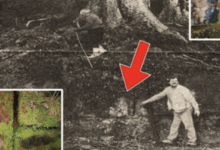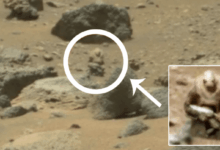Just IN: James Webb Telescope Saw First Object Beyond Dark Ages But What it Found Stunned EveryOne
Just IN: James Webb Telescope Saw First Object Beyond Dark Ages But What it Found Stunned EveryOne
Webb Telescope and the Mystery of Ancient Galaxies: Is the Universe Older Than We Thought?
Will the history of astronomy be divided into two eras: before Webb and after Webb? It seems that this is gradually becoming a reality. The James Webb Space Telescope (JWST) has delivered a series of groundbreaking discoveries that may force us to rewrite what we know about the universe.
One of the most astonishing recent findings is the strange light emitted from the “Cosmic Dark Ages.” According to current theories, after the Big Bang occurred about 14 billion years ago, the universe went through a period with no light—known as the “Dark Ages.” During this phase, space was covered by thick clouds of gas, preventing light from passing through. In theory, even the most powerful telescopes should not be able to observe any objects beyond this boundary.
However, scientists have long detected a mysterious form of light emerging from these dark clouds. Now, thanks to JWST, this mystery has been unveiled: this light is actually Lyman Alpha radiation, a signature of early galaxy mergers and star formation. The shocking part is that this radiation should have been blocked by the dense neutral hydrogen of the Dark Ages, yet Webb was still able to detect it.
What Does This Mean?
This could indicate that the universe produced massive galaxies much earlier than we ever imagined.
The Galaxy Beyond Darkness
Another discovery has sparked even more controversy: the two most distant galaxies ever observed have a redshift of about 16, meaning they existed right in or even before the Dark Ages. This directly contradicts current cosmological models, which suggest that galaxies could only form after the Dark Ages ended.
To make things even more puzzling, Webb has also detected a supermassive black hole inside GN-z11—a galaxy located 13.2 billion light-years away. The unbelievable part? This black hole reached an enormous size just 400 million years after the Big Bang, while current models cannot explain how a black hole could grow that large in such a short time.
So, what is actually happening? Two possible explanations have been proposed:
- The universe may be older than we thought, meaning its age is not 13.8 billion years but possibly much greater.
- Some unknown phenomenon occurred after the Big Bang, such as time dilation or an entirely new mechanism of galaxy and black hole formation that we have yet to understand.
The Cyclic Universe Theory
One of the most intriguing hypotheses recently proposed is the Conformal Cyclic Cosmology (CCC) model by Nobel laureate Roger Penrose. According to this theory, our universe is not the first one—instead, it is part of an endless cycle where each new universe is born from the remnants of the previous one.
In this model, black holes from the old universe may have evaporated, releasing energy that triggered a new Big Bang—starting a fresh universe. This could potentially explain the unexpected presence of supermassive black holes in the early stages of our universe.
A New Era of Astronomy
While JWST’s discoveries may not provide final answers just yet, they have raised crucial questions:
- Did the universe truly have a beginning, or has it always existed?
- Is there a mysterious mechanism that accelerated the formation of early galaxies?
- Or could it be that we are completely wrong about how we understand time and space?
Since its launch, Webb has shattered numerous cosmic records, from the most distant galaxy, the most distant galaxy cluster, the most distant black hole, to the most distant quasar. This suggests that the universe may not only be older but also far more complex than we ever imagined.
So, what do you think about these discoveries? Could the universe be infinite in age, or does it undergo continuous cycles of rebirth? Share your thoughts!




